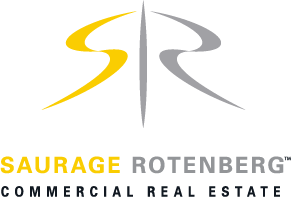Article submitted by Chris Shaheen, Development Specialist for Saurage Rotenberg Commercial Real Estate
Written by C. Michael Hunter Ezinarticles.com
Capitalization rates, or CAP rates, are analyzed to provide both a buyer and a seller with some basic information on how commercial real estate value is based on the interest income that is generated by the property per year relative to the net investment. Although these valuations are only an estimate and may fluctuate from day-to-day based on real estate stocks, there is seldom a factor that is as debatable as the CAP rate when deciding to buy or sell commercial real estate.
Factors to Consider
One may wonder if CAP rates are a good way to assess commercial spaces. They may very well play a role in this assessment; however, the following factors should be carefully considered to achieve reliable results.
- Point of Reference – CAP calculations are valued against a benchmark of ten percent. Although it is feasible this to method of calculation to be used as a shortcut, the use of a generalized capitalization amount should be avoided. When it comes to the net worth of real estate, any minor fluctuation could lead to significant errors when making this calculation which could have huge monetary repercussions. As tedious as it may seem, rather than determining the approximate value of a certain property, it is much more advisable to thoroughly perform all calculations and then settle a representative value.
- Approximations – Many times, the data that is provided is an approximation. For commercial holdings, the monetary aspects of the property such as total income generation per year; percentage of vacancies; total amount of yearly expenses; and NOI sheets should never be an estimate; these figures should be exact. When considering the purchase of a commercial property, a buyer should not be satisfied when the language that is used to describe the financial aspects of the property is in the form of an estimation, such as an income of “around” $5,000,000.00, with a vacancy range of “approximately” six percent and an income-expense ratio of “about” thirty percent. Buyers should steer clear of real estate where the sellers are unwilling to provide exact figures for appraisal purposes.
To read this article in its entirety click HERE.
To view this week’s Featured Property click HERE.
Chris Shaheen is a graduate of Louisiana State University where he obtained a Bachelor of Science in Business Management. Shaheen obtained the Louisiana Real Estate Sales License in 1995 where he began work as a consultant with Saurage Company Inc. and remains today as a specialist in development, land valuation, and financing with Saurage Rotenberg Commercial Real Estate.
Saurage Rotenberg Commercial Real Estate is a member of the Baton Rouge Area Chamber of Commerce (BRAC); the West Baton Rouge Chamber of Commerce; the Baton Rouge Growth Coalition; the Baton Rouge Better Business Bureau; the Louisiana Commercial Data Base (LACDB); and the International Council of Shopping Centers (ICSC). Several agents, on an individual basis, are members of the Society of Industrial and Office Realtors® (SIOR), the Certified Commercial Investment Member Institute (CCIM); the National Association of REALTORS® (NAR); and the Greater Baton Rouge Association of REALTORS® Commercial Investment Division (CID).


